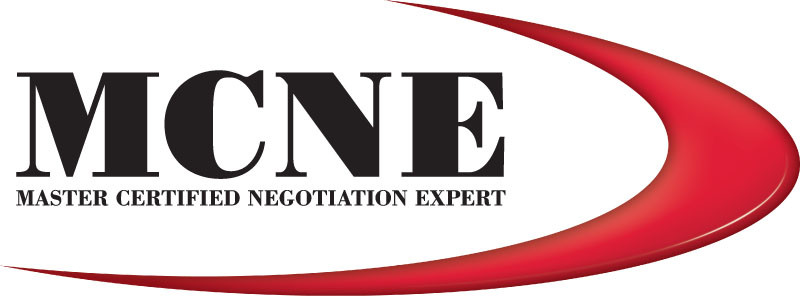
Blockchain technology and its integration with real estate transactions.
Blockchain has been making waves in various industries, revolutionizing the way we store and transfer data securely. And with the ever-evolving real estate market, it comes as no surprise that this innovative technology has found a natural fit in streamlining and enhancing the process of buying and selling properties. So, if you’ve ever wondered what blockchain is and how it works in the context of real estate, you’ve come to the right place. Let’s dive in and unravel the mysteries of this exciting technology.
Understanding Blockchain: An Overview Of The Technology
Blockchain technology has emerged as a game-changer in numerous industries, with real estate being one of them. As traditional systems grapple with inefficiencies and the need for increased transparency and security, blockchain presents a potential solution. In this section, we will delve into a comprehensive overview of blockchain and how it operates within real estate transactions.
At its core, blockchain is a decentralized and distributed ledger technology that records transactions across multiple computers or nodes. Unlike traditional databases, where a central authority controls and verifies transactions, blockchain relies on a network of participants known as nodes. These nodes work together to validate, record, and secure transactions, creating a tamper-resistant and transparent system.
So, how does blockchain work? To understand this, let’s break it down into key components:
1. Distributed Ledger: A blockchain consists of a digital ledger that records all transactions and data in a chronological and permanent manner. This ledger is replicated and stored across multiple nodes, ensuring consensus and eliminating the risk of a single point of failure.
2. Blocks: Transactions are grouped into blocks, which are linked together in a chain-like structure. Each block contains a unique identifier, timestamp, and a reference to the previous block, creating an immutable record of transactions.
3. Consensus Mechanism: Blockchain utilizes a consensus mechanism to ensure agreement among participating nodes regarding the validity of transactions. Common consensus mechanisms include Proof of Work (PoW) and Proof of Stake (PoS), which require nodes to solve complex mathematical problems or stake a certain amount of cryptocurrency to validate transactions.
4. Smart Contracts: Smart contracts are self-executing agreements coded on the blockchain. These contracts automatically trigger predefined actions once specified conditions are met. In real estate transactions, smart contracts can automate tasks such as verifying property ownership, transferring title deeds, or releasing funds upon completion of predefined milestones.
Now, let’s explore how blockchain intersects with real estate transactions.
The nature of real estate transactions involves complex processes, multiple parties, and a plethora of documents. These transactions are often plagued by challenges such as fraud, lack of transparency, and lengthy administrative processes. By incorporating blockchain, the real estate industry can benefit from enhanced security, improved efficiency, and increased trust.
Blockchain can streamline the process of establishing property ownership and reducing the need for intermediaries. Each property can be tokenized, representing a digital asset that can be easily bought, sold, or traded on a blockchain network. This tokenization allows for fractional ownership, enabling individuals to invest in real estate properties with smaller amounts of capital.
Furthermore, blockchain technology can revolutionize title deeds and property records. Traditional land registries are prone to errors and fraudulent activities. By maintaining property records on an immutable blockchain, ownership history, transaction details, and encumbrances can be securely stored and easily accessible to authorized parties. This eliminates the need for costly and time-consuming title searches while minimizing disputes over ownership.
Additionally, blockchain makes the real estate financing process more efficient. Through tokenization, properties can be divided into shares and sold to investors globally, unlocking liquidity and opening up new avenues of financing. Moreover, the use of smart contracts can automate the transfer of funds, ensuring the timely completion of real estate transactions and reducing the risks associated with manual escrow processes.
In summary, blockchain technology holds immense potential in transforming the real estate industry, offering enhanced security, increased efficiency, and improved transparency. By leveraging the distributed ledger technology, real estate transactions can become more streamlined, reducing friction, and increasing trust between various parties involved. Embracing blockchain has the power to revolutionize the way real estate transactions are conducted, paving the way for a more accessible and inclusive real estate market.
Blockchain And Real Estate: A Perfect Match
Blockchain And Real Estate: A Perfect Match
In recent years, blockchain technology has emerged as a groundbreaking innovation with the potential to revolutionize a wide range of industries. Among these industries, real estate stands out as a particularly promising fit for blockchain integration. The use of blockchain in real estate transactions offers numerous advantages, including transparency, efficiency, and security. In this section, we will delve into the specifics of how blockchain works with real estate transactions and explore the benefits it brings to the table.
At its core, blockchain is a decentralized and distributed ledger that records and verifies transactions across multiple computers in a network. Each transaction, or block, is connected to all previous transactions in a chain-like structure, creating an unalterable and transparent record of all activities. This decentralized nature eliminates the need for intermediaries, such as banks or brokers, which are traditionally involved in real estate transactions, thus streamlining the process and reducing costs.
One of the significant challenges in real estate transactions is the lack of transparency and trust between parties. By implementing blockchain technology, all relevant information, including property ownership records, transaction history, and legal documents, can be stored and verified on the blockchain. This creates a level playing field for all participants, as access to accurate and up-to-date information is readily available to everyone involved. This transparency greatly reduces the potential for fraud and disputes, instilling confidence in all parties throughout the transaction process.
Another key advantage of blockchain in real estate transactions is the increased efficiency it offers. Conventional real estate transactions often involve a multitude of paperwork, manual verifications, and numerous intermediaries, leading to lengthy processing times. Blockchain technology simplifies and automates these processes by digitizing documents and creating smart contracts. Smart contracts are self-executing agreements that automatically enforce the terms and conditions of a transaction when specific conditions are met. The use of smart contracts eliminates the need for manual verification and reduces the time and effort required to complete a real estate transaction.
Furthermore, blockchain enhances the security of real estate transactions. With traditional paper-based systems, there is always a risk of documents being forged, lost, or tampered with. These vulnerabilities can lead to legal disputes and financial losses. By leveraging blockchain’s technology, data is encrypted and distributed across a network of computers, making it virtually impossible for unauthorized individuals to tamper with or modify records. The immutability and irrefutability of blockchain-generated data ensure the integrity and authenticity of real estate transactions, providing all parties involved with an extra layer of security.
In addition to the benefits already mentioned, blockchain also offers the potential for fractional ownership and increased liquidity in the real estate market. By tokenizing real estate assets, it becomes possible to divide them into smaller, tradable pieces. This allows for easier and more affordable access to real estate investments, as investors can purchase and trade fractions of a property. Furthermore, blockchain-based platforms enable efficient and secure peer-to-peer transactions, eliminating the need for intermediaries and reducing transaction costs.
In conclusion, the integration of blockchain technology into real estate transactions holds great promise. By leveraging its transparency, efficiency, and security, blockchain can revolutionize how real estate transactions are conducted. Through the elimination of intermediaries, the implementation of smart contracts, and the creation of transparent and immutable records, blockchain has the potential to streamline processes, reduce costs, and foster trust among all parties involved in real estate transactions. As the technology continues to evolve, we can expect to see widespread adoption of blockchain in the real estate industry, ultimately bringing forth a more accessible, efficient, and secure real estate market for everyone.
How Blockchain Works In Real Estate Transactions
When it comes to real estate transactions, efficiency, security, and transparency are crucial factors. Blockchain technology has emerged as a tool that can revolutionize the way we conduct real estate transactions, offering a wide range of benefits for both buyers and sellers. In this section, we will delve into how blockchain works in real estate transactions and explore its potential to streamline processes and increase trust in the industry.
At its core, blockchain is a decentralized and immutable digital ledger that records transactions across multiple computers or nodes, ensuring transparency and preventing any alteration or tampering of data. It operates on a peer-to-peer network, meaning that there is no need for intermediaries such as banks or third-party organizations to validate transactions. This decentralized and trustless nature of blockchain makes it an ideal solution for real estate transactions.
One of the primary challenges in real estate transactions is the lengthy and complex process involved in establishing property ownership and transferring titles. With blockchain, this entire process can be simplified and expedited. By creating a digital identity for a property on the blockchain, ownership records and transactions can be securely recorded and easily accessible to all relevant parties, including buyers, sellers, real estate agents, and government authorities.
Smart contracts, a key feature of blockchain technology, play a vital role in real estate transactions. These self-executing contracts contain predefined rules and conditions that automatically initiate and enforce the terms of an agreement between the parties involved. Utilizing smart contracts in real estate transactions eliminates the need for manual paperwork and reduces the potential for errors or delays.
Through blockchain’s transparent and traceable nature, potential buyers can easily verify property ownership, history, and other relevant information. This not only saves time but also increases trust and confidence in the transaction. Additionally, blockchain provides a secure and tamper-proof platform for storing and sharing documents such as property titles, lien records, and mortgage agreements.
Fraud prevention is another significant advantage offered by blockchain technology in the real estate sector. As property records are stored on a distributed ledger, it becomes extremely challenging for any unauthorized party to manipulate or alter them. This reduces the risk of fraudulent activities such as forged titles, false ownership claims, or double-spending of assets.
In traditional real estate transactions, escrow agents or intermediaries hold funds until the completion of a transaction. However, this process can be costly and time-consuming. With blockchain, the use of cryptocurrency or digital tokens can streamline the payment process by automating transactions once predefined conditions are met. This eliminates the need for intermediaries and reduces costs while enhancing the speed and efficiency of the transaction.
Furthermore, blockchain technology enables fractional ownership, opening up new opportunities in real estate investment. Through tokenization, properties can be divided into smaller units and represented as digital tokens. This allows investors to purchase a fraction of a property, thereby increasing accessibility to real estate markets and opening up investment possibilities for individuals who may not have the means to invest in whole properties.
In conclusion, blockchain technology has the potential to revolutionize real estate transactions by providing transparency, efficiency, and security. By leveraging features such as decentralized ledger, smart contracts, and digital identities, blockchain can streamline processes, reduce costs, prevent fraud, and increase trust in the industry. As the technology continues to evolve and gain wider adoption, we can expect to see significant improvements in the way real estate transactions are conducted, benefiting both buyers and sellers alike.
Benefits And Challenges Of Blockchain In Real Estate
Blockchain technology has gained significant attention in recent years, revolutionizing various industries and sectors. Real estate is no exception to this technological disruption. The transparency, security, and efficiency offered by blockchain have the potential to reshape how real estate transactions are conducted. However, like any emerging technology, blockchain also comes with its own set of benefits and challenges when applied to the real estate industry.
One of the key benefits of using blockchain in real estate transactions is increased transparency. Traditional real estate transactions often involve multiple intermediaries, including brokers, lawyers, and banks. This can create a lack of transparency and trust between parties, leading to delays and potential disputes. With blockchain technology, all the transaction data is stored in a decentralized and immutable ledger, accessible by all parties. This transparency helps eliminate fraud and ensures that every party has complete visibility into the transaction process.
Security is another crucial advantage of blockchain in real estate. Due to its decentralized nature, blockchain is highly resistant to hacking and tampering. The transaction records stored in the blockchain are encrypted and linked together in a chain, making it virtually impossible for anyone to alter the data without consensus from the entire network. This enhanced security feature makes blockchain an attractive solution for preventing fraudulent activities and providing a reliable audit trail for real estate transactions.
In addition to transparency and security, blockchain technology also has the potential to streamline the real estate transaction process, making it more efficient and cost-effective. By eliminating the need for intermediaries and manual paperwork, blockchain can significantly reduce transaction time and costs. Smart contracts, which are self-executing contracts with predefined terms and conditions embedded into the blockchain, can automate various tasks, such as property title transfers and rental agreements. This automation simplifies the process, reduces paperwork, and minimizes the chances of errors or delays.
Despite its promising benefits, the adoption of blockchain in the real estate industry does face some challenges. One of the primary challenges is the integration with existing systems and processes. Real estate is a complex industry with diverse stakeholders, regulations, and legacy systems. It may require significant effort and resources to integrate blockchain technology seamlessly into the existing infrastructure. Collaboration between technology providers, industry players, and regulators is essential to overcome these integration challenges.
Another challenge is the potential resistance from stakeholders who benefit from the current system. Intermediaries, such as brokers and agents, may view blockchain as a threat to their role and livelihood. Resistance from industry incumbents and regulatory hurdles can slow down the adoption of blockchain in real estate. Educating and creating awareness among stakeholders about the benefits and opportunities offered by blockchain technology will be crucial in overcoming this resistance.
Furthermore, the scalability of blockchain technology is another challenge. As real estate transactions involve a large volume of data and complex negotiations, the blockchain network needs to be able to handle a high number of transactions simultaneously. Scalability issues need to be addressed to ensure that blockchain can effectively handle the demands of the real estate industry.
In conclusion, the benefits of integrating blockchain technology into real estate transactions are evident. Increased transparency, enhanced security, and improved efficiency can transform the way real estate deals are conducted. However, the challenges of integration, resistance from stakeholders, and scalability need to be overcome to fully realize the potential of blockchain in the real estate industry. With the right collaboration, innovation, and regulatory framework, blockchain has the potential to revolutionize real estate transactions and create a more transparent, secure, and efficient future.
















